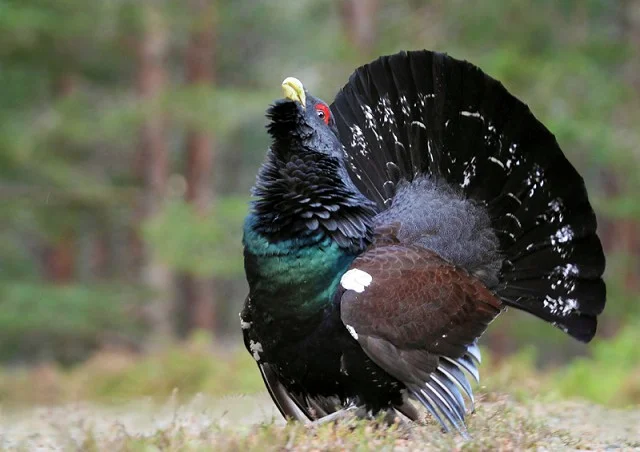Last-ditch attempt to prevent second UK capercaillie extinction
The latest survey by the RSPB found just 542 Western Capercaillie surviving in Scotland last winter, a severe drop from the 1,114 counted in 2015-2016.
The critically low number of birds has led the Cairngorms National Park to draw up an emergency plan to save the species, which has suffered due to recreational disturbance and poor summer weather, likely brought about by climate change.

Western Capercaillie could once again disappear from Scotland within the next two or three decades (John Fielding).
Scotland was home to approximately 2,000 Western Capercaillie just 20 years ago, when its range stretched west to Loch Lomond.
The remaining stronghold in the forests around Strathspey is under increasing pressure from dog-walkers and cyclists. Andy Ford, the Cairngorms' director of nature of climate change, said that mountain-bikers and ramblers had readily followed voluntary restrictions, while officials are now planning to reroute visitors away from the most sensitive areas.
Western Capercaillie has already undergone an extinction in the UK. The birds existing in Scotland today are the descendants of birds reintroduced from Sweden in 1837, after the grouse had been hunted to extinction.
It is expected that it could vanish again in as little as 20 years unless radical measures are implemented.
Already, landowners have removed deer fences, known to kill the birds in flight, and dog-walkers have been asked to keep their pets on a lead. Cairngorms Connect, a group of landowners, have been working to rewild the Highlands by boosting the area covered by the native pine forests so vital for the species.
Mr Ford said the latest survey results "really brought home the sense of urgency".
He added: "We've seen the capercaillie declining and have invested a significant amount of time and money doing what we can. What this does is say we need to do more. We're going to need an emergency plan for the next three to five years. What more do we need to do to act at speed, and act together wherever possible?"
If present measures fail, byelaws to close off key areas in the breeding season could be introduced. Meanwhile, diversionary feeding for predators is being tested, including putting carrion out for Pine Martens and Red Foxes, to reduce the number of capercaillie chicks taken.
Gus Jones, convener of the Badenoch and Strathspey Conservation Group, said that previous assessments have failed to match the situation: "These fail to take proper account of the reality that as recreational pressures grow, many users seek out less frequented areas, which are often promoted on social media. Their appraisals have also underestimated the distances people go, especially given the rising popularity of mountain biking, e-bikes and running."
Mr Jones blamed developments near sensitive locations, allowed by the park authority and NatureScot, for worsening the threat by increasing disturbance.

